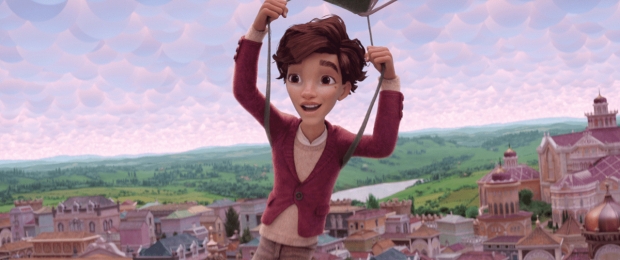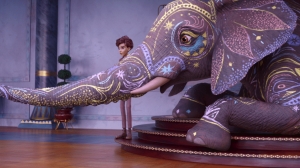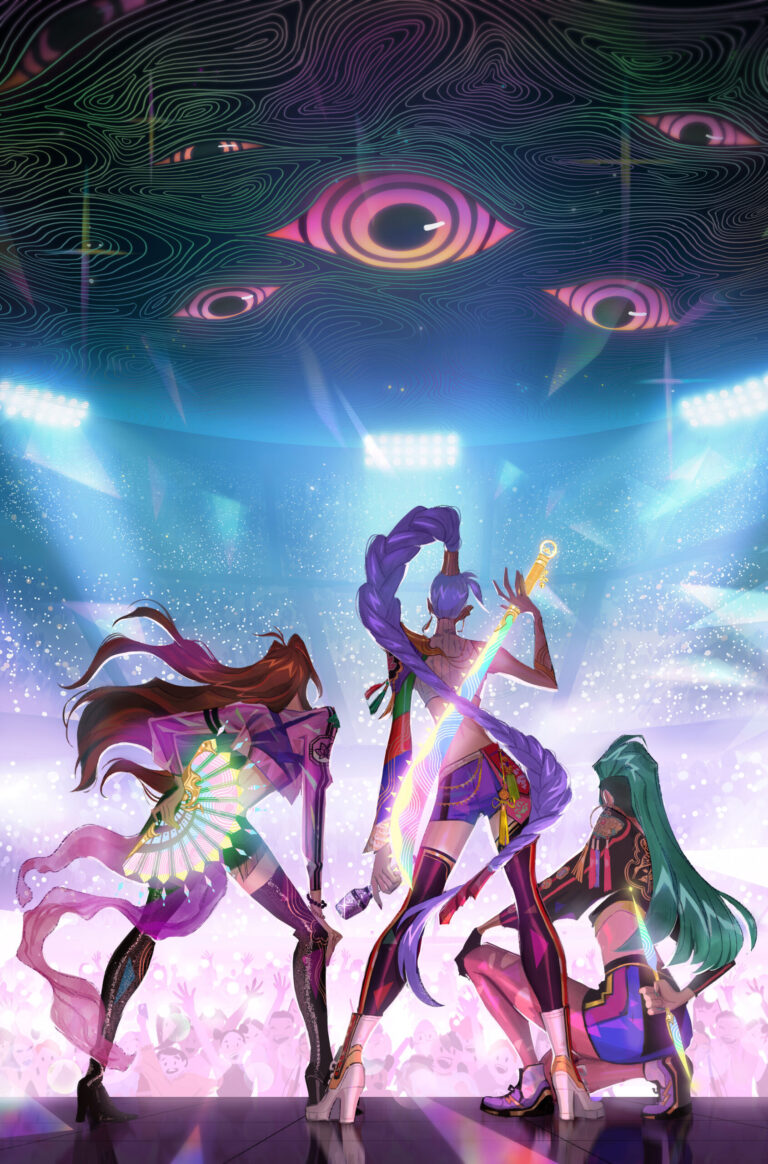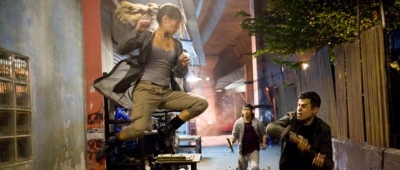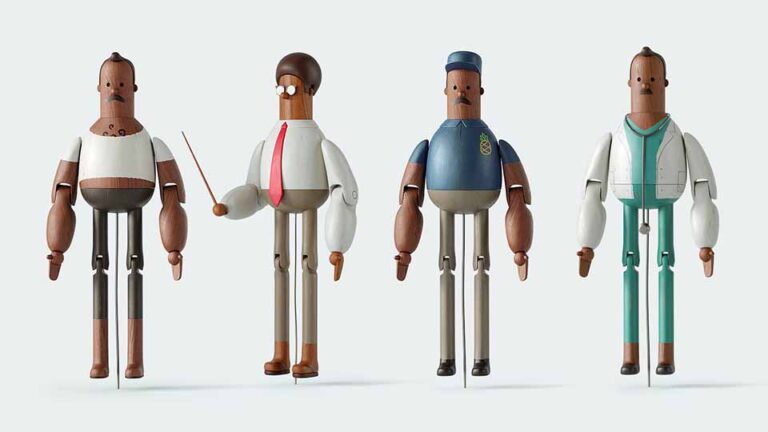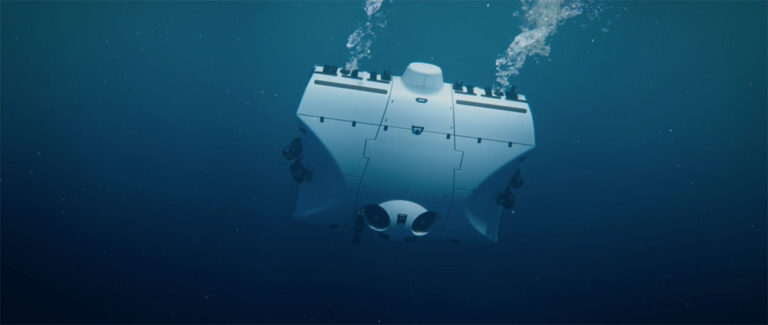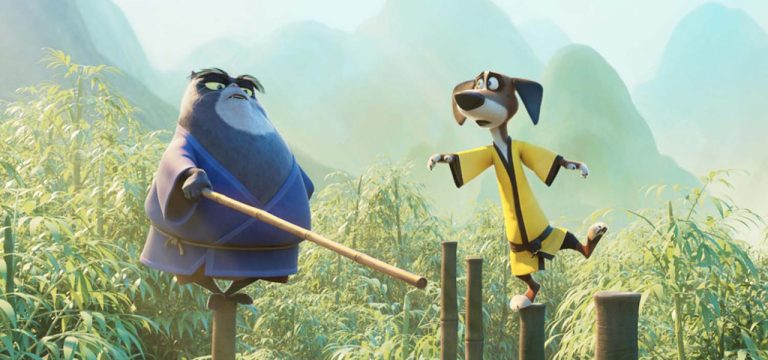
JP: I read “The Magician’s Elephant” to my children. And, as I read it, I knew this would be a great movie. Children’s books tell the truth, just as Kate is saying. They’re about making sense of the world, and they inspire people. I think people are excited to tell their own version of a story that moved them, especially being in such a digital age where so many tools of storytelling are available to us.
VD: With this medium, there were also very few limits with how you could truly capture the imagination of the book. That said, what were your visual goals with the film?
Victoria Davis: Kate, one thing I’ve always been enchanted by with your books is how you use a child’s connection with an animal to help them work through and process things that are happening in the world around them. Why is this such a common direction in your stories? Is it personal to your own experience?
So, in our world building – in our design of the lighting style, the animation style, and even the clouds – we really tried to be very specific about where we were bringing in the patina of age and imperfection so that the world didn’t feel fantastic, the world felt grounded, and then we let the magical elements play against that.
But first, check out the trailer:
Wendy Rogers: Animation is always sort of an allegory. We can see ourselves in animated characters, even when they come to life in a way we don’t physically look like or come from a country or world that is not our own.
WR: The whole process of directing my first film with such an amazing team and amazing partners and collaborators is everything that I could wish for, but the cherry on the top will be my dad seeing it. My dad’s getting older and I’m from Australia, but I haven’t lived in Australia for a long time. It’s touching to me to think that he’ll get to see something that I’ve worked so hard to make.
Of course, I say all this as a producer. But Wendy is the animation queen.
Julia Pistor: When we first developed the script, I developed it as a live-action movie. It didn’t end up getting made then but, lately, there’s been a renaissance in animation, which has allowed us to tell stories in different ways. At the end of the day, I’m so glad it wasn’t made in live-action because animation allows us to have animal characters, like the elephant, emote and add more nuance of heart and performance that is much harder to do in live-action than in animation.
WR: And if it’s my dad somehow talking to Kate, even better.
For the last 23 years, author Kate DiCamillo has been a champion of children’s literature. More specifically, a master in the art of creating symbolic, life-affirming core animal characters in all her stories.
The Magician’s Elephant – adapted, coincidentally, from DiCamillo’s fifth published novel – premieres on the streaming giant Friday, March 17. The author’s second book to be turned into a 3DCG feature – following The Tale of Despereaux – the film centers around a young orphan named Peter, who is searching for his long-lost sister.
Kate DiCamillo: I do it unwittingly, and I do it ad nauseam, as well. It’s one animal after another, to the point where sometimes I wonder if I could even write a book without an animal showing up. But part of the reason it’s there is because it is that eight-year-old in me who’s writing those books.
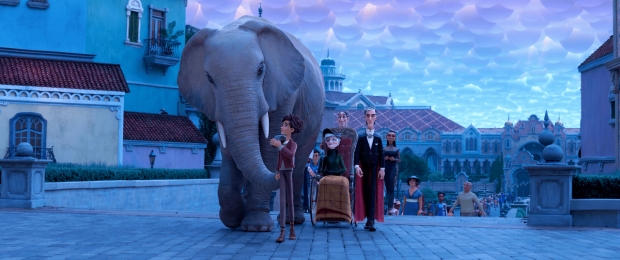
When Peter (voiced by Honey Boy’s Noah Jupe), crosses paths with a fortune teller in the market square, there is only one question on his mind: is his sister still alive? The answer – that he must follow a mysterious elephant – sets Peter off on a remarkable journey to complete three seemingly impossible tasks that magically change the face of (and give hope to) his entire town along the way.
JP: When Wendy and I first met, we asked ourselves, “How do you make magical realism in animation where anything is possible?” A lot of animated movies have elephants crashing through the ceiling of things, and that’s normal. We had to create a world that felt grounded and real and heightened and magical all at the same time, which is a real challenge, and Wendy did a brilliant job.
JP: Another important thing to us in building this world, is that the book is incredibly beautiful, and takes place in a more traditional fable town. And it was important to us to tell the story with people that you’d see if you went to New York City and just scoped out the subway, where you’d find people of all different shapes and sizes. And that’s not easy in animation. In live-action, you can cast whoever you’d like. But in animation, everything is built. And Animal Logic, with Wendy, created whole new systems in order to have background characters feel diverse, because it was really essential to us.
[embedded content]
KD: When I first started writing, I began by writing short stories for adults. And then I ended up in a book warehouse where I was working with children’s books all the time, and I started to read them. And then I thought, “I want to try to write one.” And I found that it changed me as a writer and as a person because I felt that it was duty-bound to offer hope, to tell children things didn’t have to be perfect to be ok. We all need that hope so much right now. So maybe that’s why.
WR: Looking at fairy tales or fables, those are told again and again because they contain lessons that are timeless for all generations. And The Magician’s Elephant is timeless. The qualities that Peter shows in his resilience, his growth, the questions he asks, his growing up, these are timeless topics for all generations. And it’s amazing that we get to tell those kinds of stories.
KD: I walk my dog a lot in my neighborhood in Minneapolis and what I’m looking forward to is some person that I do not know, who has put all the pieces together, sticking their head out of the door and talking to me on the sidewalk saying “I saw that movie about the elephant and I was so moved,” because I know that people are going to be so moved. I’m so grateful to Wendy and Julia for that gift, of people talking to me about what you all have done.
VD: We’re not only seeing a renaissance in animation, but also in children’s books reimagined as animated films or TV series. Why do you all think this is the case? What makes the current climate feel like such a pivotal time to get these stories to a wider audience?
KD: I think it’s a brilliant question and a really good point about how animation, in the same way that animals do, helps us relax emotionally so our hearts are more open. It makes it more of a fairy tale and easier to tap into that magic of fairy tales. It speaks to something very ancient in all of us.
WR: I wanted the animation style to feel very physically grounded so that the magic that is talked about in the film would be like a memory that had been in the town, but people were so in their routine that they didn’t even pay attention to it. We wanted it to be something that would reawaken this town, that would reawaken Peter, and then his journey would inspire the townspeople.
DiCamillo has published more than 25 novels, including “Because of Winn-Dixie,” “The Tiger Rising,” “The Tale of Despereaux,” “The Miraculous Journey of Edward Tulane,” “The Magician’s Elephant,” the “Mercy Watson” series, and “Flora & Ulysses.” She is one of only six authors to be awarded two Newbery Medals and four of her books have been developed into films, with a fifth feature adaptation now launching on Netflix.
JP: You need to tell us, Kate, when that happens.
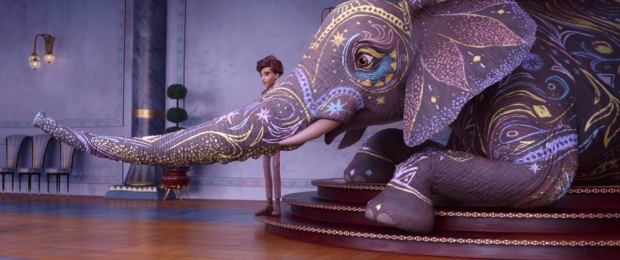
Directed by Puss in Boots’ visual effects supervisor extraordinaire Wendy Rogers, The Magician’s Elephant is produced by The Spiderwick Chronicles’ Julia Pistor and animated by the creative studio Animal Logic, known for their work on Happy Feet, The Lego Movie, Peter Rabbit and DC League of Super-Pets.
I was a kid who lived for books and lived for animals. I loved “Paddington,” I loved “The Mouse and the Motorcycle.” But then, there’s this other thing that happens, where we, as readers, let our guard down more easily sometimes for an animal protagonist than we do for a human one. All of those things come into play when I’m writing, and they’re all on ample display here with The Magician’s Elephant.
VD: What are you all most looking forward to with the release of the film, especially because all three of you come from a long history of magical storytelling.
Victoria Davis is a full-time, freelance journalist and part-time Otaku with an affinity for all things anime. She’s reported on numerous stories from activist news to entertainment. Find more about her work at victoriadavisdepiction.com.
DiCamillo’s writing career kicked off after she moved to Minnesota, publishing her first novel, “Because of Winn-Dixie,” in 2000. The book became required reading for many grade schools and, for over two decades, DiCamillo has stuck with her winning formula: a child, an animal, and a little bit of magic. We got the chance to talk with the award-winning author about her journey as a writer, her infatuation with animals as guides in life, and got the inside scoop from Rogers and Pistor on how they went about building the magical realism of The Magician’s Elephant.
JP: I’ve been working on this movie since 2008, trying to get it made, trying to find the right people to get it made, so it’s incredibly exciting for me that the world gets to see it. And that someone gets to talk to Kate about it when she’s walking her dog.
VD: And Wendy and Julia?
VD: And Wendy, you’ve always worked in the realm of magical stories – from The Chronicles of Narnia to Puss in Boots – but, other than this being your directorial debut, what made this project particularly special? Same question to Julia, who is also a veteran of bringing magical stories to life.
VD: Many of your books have been adapted, including more recently, The Tiger Rising. The Tale of Despereaux was adapted as an animation. You mentioned how animals help us let our guard down, and animation has that ability as well. With The Magician’s Elephant, what made it important to do as an animation? How did it serve the story and the audience?

